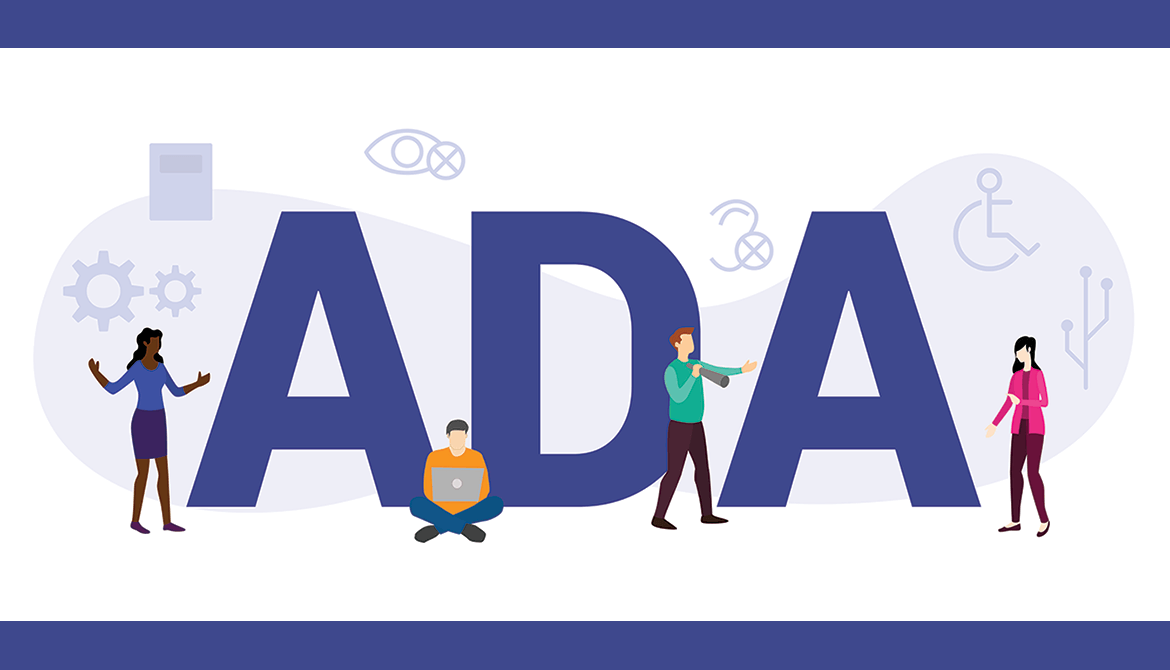2 minutes
Provide an enjoyable, informative online experience for members with disabilities—and avoid legal action—by following these accessibility best practices.
This article is adapted from a blog post first published on kearley.com and is reprinted with permission. Read the original here.
While the Americans with Disabilities Act was enacted nearly 30 years ago, lawyers say lawsuit filings related to ADA compliance aren’t cooling down. In fact, ADA complaints specifically against website owners are heating up. According to website accessibility company UsableNet, last year there were 2,285 ADA website lawsuits filed in federal courts across the U.S., an increase of 181% from 2017.
So what does this mean for your organization’s website?
Websites designed without thought or concerns for universal accessibility can create barriers for people with disabilities. We can’t assume everyone sees and accesses a webpage in the same way. Accessible website design recognizes these differences and accommodates individuals with disabilities to allow them to access the information and services offered.
The law that primarily governs accessibility is the Americans with Disabilities Act. And although it doesn’t specifically mention them, Title III of the ADA has been interpreted by U.S. courts to apply to websites. If your website contains content or areas that are inaccessible to people with disabilities, you could be in violation of Title III and find your organization at the wrong end of a lawsuit.
How do you ensure your website is accessible to individuals with disabilities?
Develop and maintain the site so people with disabilities can enjoy full use of your website—that includes content, navigation, etc.
Here are some basic tips on providing accessible content and navigation alternatives:
- Alt Text: HTML tags are specific instructions in your website’s code that are understood by a web browser or screen reader. One type of HTML tag is called “alt text” (short for “alternative text”) and is used to provide brief text descriptions of images that screen readers can understand and speak. Add alt text to all meaningful images on your website to aid vision-impaired users navigating your site using a screen reader.
- Closed Captions: All videos on your website must have closed captioning to allow hearing-impaired users access the video content.
- Extended Audio Descriptions on Videos: This is a cumbersome requirement, but success criterion 1.2.5 (yes, that’s level AA conformance) says that an audio description of the important, non-audible information should be conveyed during pauses in the video. This is suggested in Web Content Accessibility Guidelines 2.0 and not part of the law. The exception here is if the audio in the video speaks for itself and no description is needed for vision-impaired users to understand the content.
- Text Transcripts: Add a text transcript beneath all video and audio files.
- No Images of Text: All text must be readable by a screen reader. Screen readers can’t see/process text that is part of an image.
- Post Documents in a Text-Based Format: Always provide documents in a text-based format that is screen reader-friendly, such as HTML or RTF (Rich Text Format), in addition to PDFs.
- Keyboard Navigation: Make sure your website is fully accessible without a mouse and can be navigated by using the arrow or tab buttons on your keyboard.
Chelsea McCall, account services coordinator/junior copywriter for Kearley & Company, is from Southlake, Texas, and is the newest member of the Kearley team. She recently graduated Magna Cum Laude from UTA, where she was also recognized with the award for “Top Senior in Advertising.”
Need additional help making your existing site compliant within ADA standards or building a new site that’s more universally accessible? We’re happy to help.





